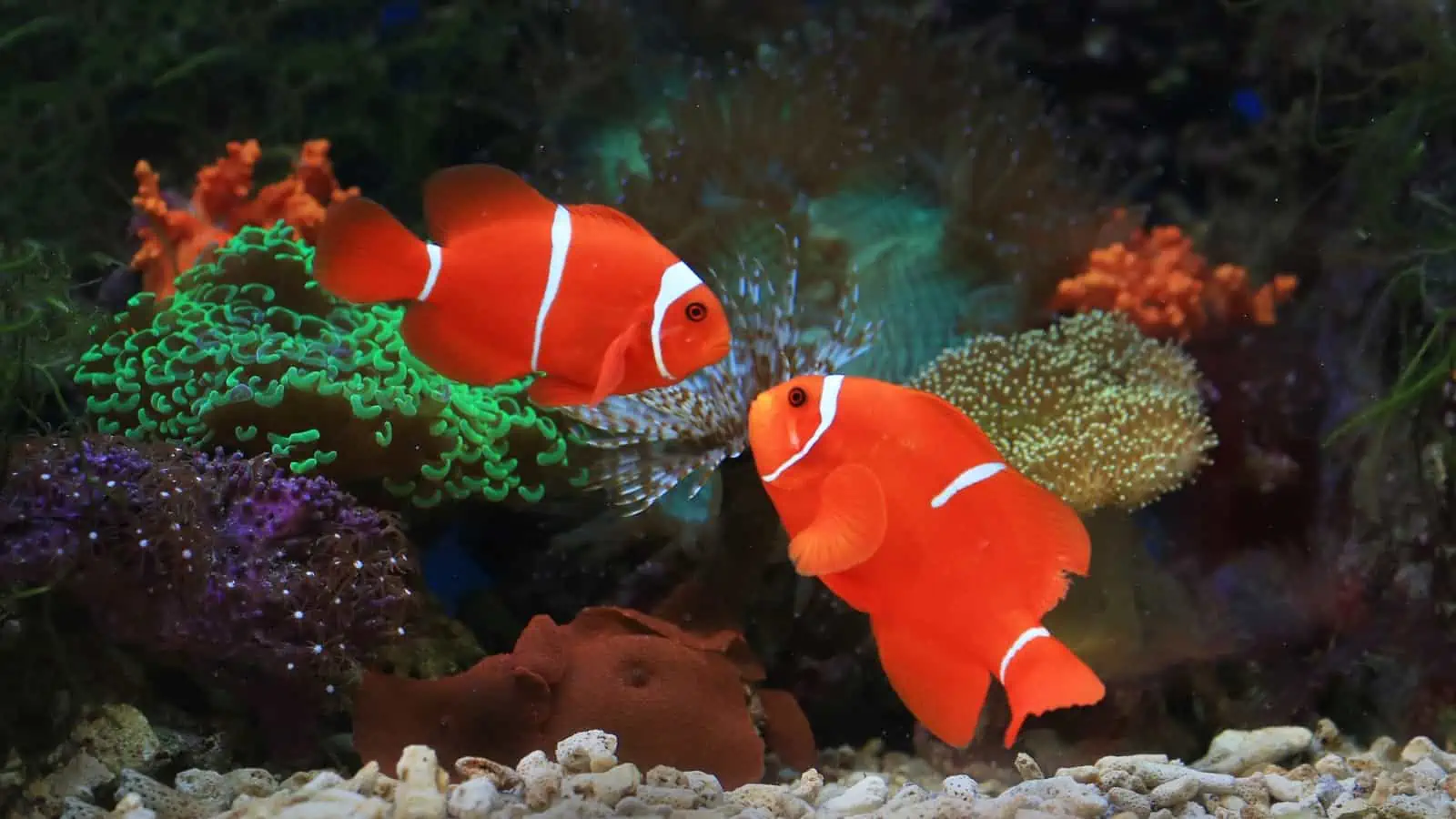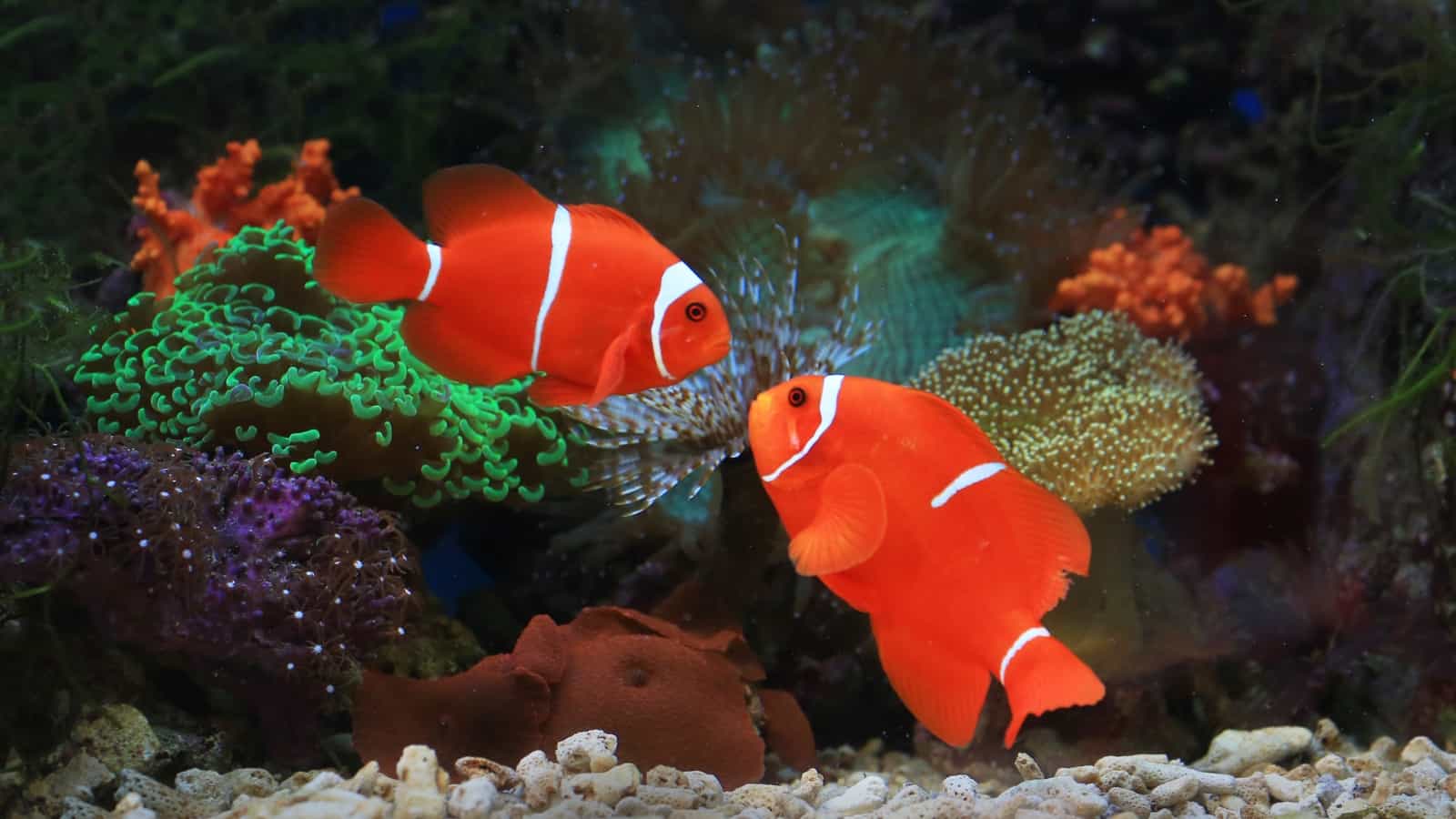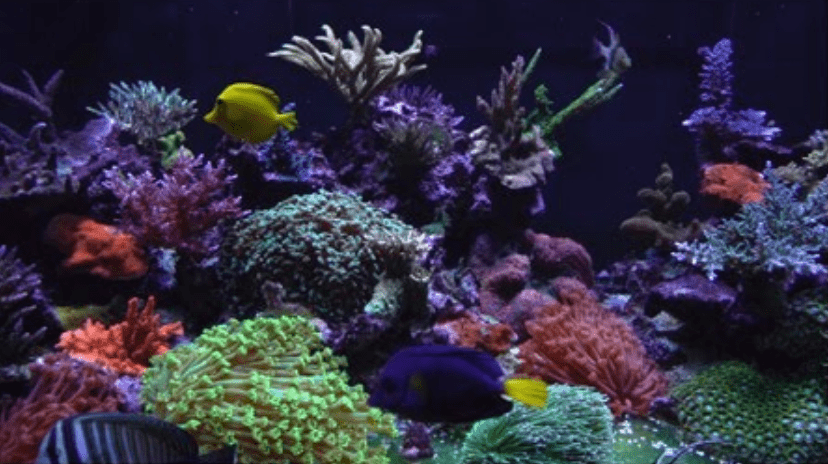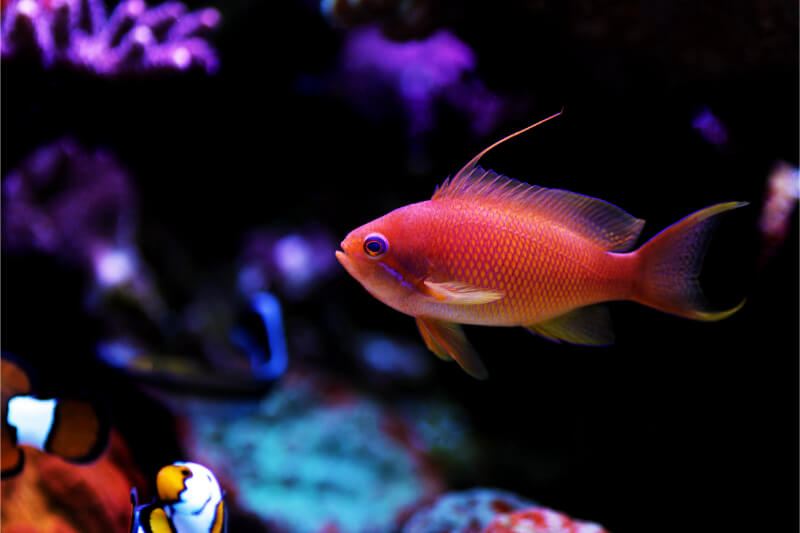I’ve kept tropical and freshwater fish of many different species for over 40 years. I love their vibrant colors, beautiful finnage, and quirky personalities. However, what I don’t love about fishkeeping is their susceptibility to diseases. Of course, some species are hardier than others, but every type of fish can get sick sometimes.
As a rookie hobbyist, I made a few mistakes when identifying and treating some of the common ailments that can affect pond and aquarium-kept fish.
So, I’ve put together this article to help you avoid nine disease treatment mistakes everyone makes and keep your fish thriving and in excellent health for their full lifespan and beyond!
Key Takeaways
- Proper Disease Identification: Recognizing the importance of diagnosing fish illnesses accurately is paramount. Observing symptoms and behaviors leads to better treatment choices and avoids the dangers of misapplication of medications.
- Medication Wisdom: Using the correct medication and dosage is essential for treatment success. Educate yourself on the medications available and consult with a vet when in doubt to avoid the risks of overdosing or using an ineffective treatment.
- Preventive Measures and Care: Quarantine new tank members to prevent disease introduction and maintain a clean aquarium to bolster fish health. Good practices such as tank cleaning and water quality management are fundamental to preventing stress and subsequent disease outbreaks.
Making the Wrong Diagnosis
The most common mistake fish keepers make is misdiagnosing the disease afflicting their precious fish.
Treating the wrong condition can cause serious problems, and you could end up using the wrong medication, which could poison precious pets! When it comes to fish treatments and drugs, there’s no one-size-fits-all solution. Most medicines are formulated and designed to treat specific conditions, and using the wrong one can worsen the problem.
In addition, overusing medication can lead to the emergence of antibiotic-resistant bacteria strains, making tackling diseases successfully more difficult, if not impossible.
To ensure you’re treating the disease correctly, you must work out what’s wrong with your fish before you start administering any medication. Watch the fish carefully and study its behavior and appearance.
Physical symptoms, such as sores, swellings, discoloration, and lost scales, can be signs of bacterial diseases. At the same time, loss of appetite and inactivity generally indicate that your fish is not thriving.
Once you have identified the disease correctly, you can choose the appropriate medication for the specific condition, giving you much more chance of curing your fish.
Using the Wrong Medication

Using the wrong medication goes hand-in-hand with making an incorrect diagnosis of your fish’s condition. Fish medication, like human drug treatments, is formulated specifically to tackle each condition. Using the wrong drug likely won’t be effective or could even kill your fish. That’s why making a correct diagnosis is vitally important.
If you’re not sure what disease is affecting your fish, seek veterinary advice from a specialist or ask the experts in your local fish store.
Getting the Treatment Dosage Wrong

Once you’ve identified the specific disease that’s affecting your fish, you can start treating it with an appropriate medication. It’s crucial to use the correct medication dosage; don’t simply guess and splash some drops of treatment into the water!
Underdosing will probably be ineffective, but using too much of the drug could harm your fish. Always follow the instructions on the medicine packaging to the letter, and if you’re not sure how much to use, ask a veterinarian or aquarium expert for advice and guidance.
Always finish the course of medication, even if your fish seems to have recovered. If you stop the treatment too soon, that can leave your fish vulnerable to relapsing. Observe your fish closely during and immediately after treatment, and look for signs of improvement. If your pet doesn’t appear to be responding well to the treatment, or if it gets worse, consult your vet for advice.
Toxic Chemicals

Most of the chemicals used for fish medicines are highly toxic. They work as disease treatments simply because they’re toxic to all life forms but kill smaller organisms like bacteria and parasites before the larger ones, such as your fish!
So, you can see why getting the dosage correct is so important. Every year, thousands of fish die because of chemical overdosing by their well-meaning owners. Because of how the chemicals work, it’s almost impossible to reverse an overdose. Note that aquarium salt is an exception to that since it works differently from chemicals.
Failure To Quarantine New Fish

New fish and plants can carry diseases into your main tank, which can sometimes lead to a mass fish kill, depending on the condition.
You can prevent that from happening by placing newbies in quarantine for at least two weeks before adding them to your main aquarium. During the quarantine period, watch the fish closely for signs of disease, work out what’s causing the problem, and treat it accordingly. When you’re sure the fish are completely healthy and all signs of the disease have disappeared, you can safely add them to your main tank.
Wash all new plants in a mild antibacterial or bleach solution, and take a few minutes to search among the leaves for snails and other parasites. Remove any pests before adding the plants to your tank.
Failing To Keep Your Aquarium Clean

Poor water quality is one of the main indirect causes of fish diseases. That’s because living in a dirty, poorly oxygenated environment is highly stressful for the fish. When fish are stressed, their immune system is compromised, leaving the animal vulnerable to attacks by bacteria and parasites.
Keep your fish tank clean and healthy for your pets by performing weekly partial water changes, removing organic waste from the substrate using an aquarium vacuum cleaner, and installing an efficient filtration system.
In addition, many chemicals used in fish medication react with organic matter, including fish waste and general detritus. So, if your fish tank is clean, more of the drug will be available for therapeutic use rather than going to waste in a dirty tank.
Do You Treat the Tank, the Fish, or Both?

There are no hard and fast rules about whether you should treat the fish in isolation or dose the whole tank. That depends on the circumstances. However, treating the individual fish in a quarantine tank usually works best.
That’s especially the case where the condition is bacterial or fungal. However, if your tank has a generalized parasite infestation, treating the whole aquarium is best. That helps to eradicate the parasites at every life stage, thus reducing their population.
Cover the quarantine tank to prevent the fish from jumping out, and be sure to aerate it thoroughly during treatment.
Failure To Observe the Fish After Treatment

It’s essential to watch your fish immediately following treatment just in case your diagnosis was wrong and the medication you have used is inappropriate.
Have a tank of clean, well-aerated water on hand just in case your fish react badly to the medication. I always have a net handy in case I need to remove the fish in a hurry. A net reduces the risk of dropped fish and makes the process of handling less stressful for you and your pets.
Not Isolating the Filter System

Another important consideration is the health of your biological filtration system. Many fish medications will kill or dramatically deplete the healthy bacteria colonies in your filter media and general aquarium environment. So, removing the fish and placing them in a dedicated hospital tank is a good way of preserving your filter as well as isolating sick fish during treatment.
Common Fish Diseases and How To Treat Them

In terms of specific diseases, here are a few common ones that aquarium owners should be able to recognize and treat.
Summary Table
| Condition | Symptoms | Treatment Options |
|---|---|---|
| Ich | Flashing and rubbing against objects, white spots on body and fins, clamped fins, rapid breathing, lethargy | Raise water temperature to 82-86°F (27-30°C), use over-the-counter medication |
| Fin Rot | Frayed or disintegrating fins and tails, lethargy, loss of appetite | Clean the aquarium, ensure water quality is within the correct parameters, and use antibacterial treatment |
| Velvet Disease (Oodinium) | Rusty or gold dust-like appearance on the body, scratching or rubbing against objects | Increase water temperature to 80-85°F (26-29°C), and use medication containing copper sulfate or formalin |
| Columnaris | White or gray patches on the skin, frayed fins, lethargy, loss of appetite | Improve tank cleanliness, quarantine, and treat with antibiotics like erythromycin or kanamycin |
| Bacterial Infections | Red patches on skin, swellings, lethargy, loss of appetite, lost scales, discolored skin | Treat with broad-spectrum antibiotic medication |
| Parasitic Infections | Visible parasites, scratching/rubbing against objects, lethargy, breathing difficulty, loss of appetite | Use specific medications like praziquantel for flukes or fenbendazole for worms |
| Swim Bladder Problems | Difficulty in swimming normally, floating, sinking, or tilting to one side | Fast the fish for a few days, feed a high-fiber diet and use broad-spectrum antibacterial treatment if caused by bacterial infection |
| Dropsy | Swollen abdomen and protruding scales (pinecone appearance), lethargy, poor appetite, difficulty swimming | Improve water quality, add aquarium salt, use antibiotics (sometimes effective) |
Ich
Ich is a parasitic infection caused by the aquatic protozoa Ichthyophthirius multifiliis.
Symptoms include:
- Flashing and rubbing against objects in the aquarium
- A scattering of little white spots across the body and fins
- Clamped fins
- Rapid breathing
- Lethargy
Treatment of this condition is usually successful if you catch it early. Increase the water temperature to between 82-86°F (27-30°C) for a few days, and dose the tank with a suitable over-the-counter medication.
Fin Rot
Fin Rot is another common disease that’s caused by bacteria. Fish with this condition develop frayed or disintegrating fins and tails, become lethargic, and stop eating.
Treat the condition by giving the aquarium a thorough clean and ensure the water quality is within the correct parameters for your fish. Use an appropriate over-the-counter antibacterial treatment that you can get from your local fish store.
Velvet Disease (Oodinium)
Velvet disease is caused by a skin parasite that shows up as a rusty or gold dust-like appearance on the fish’s body. Fish often scratch or rub against objects in the aquarium in an attempt to relieve the irritation.
Treat the condition by raising the water temperature to between 80-85°F (26-29°C) and dosing the fish with an appropriate medication containing copper sulfate or formalin that you can buy in a good fish store or pet shop.
Note that scaleless fish and invertebrates of sensitive to medicines containing copper, so be sure to quarantine affected fish rather than treating the whole aquarium.
Columnaris
Columnaris is often confused with fungus, but it is a different condition.
Symptoms include white or gray patches on the skin, frayed fins, lethargy, and loss of appetite. To treat the condition, clean the tank thoroughly to improve water quality and maintain good aquarium hygiene. Then, quarantine the affected fish and treat them with antibiotics, such as erythromycin or kanamycin.
Bacterial Infections
Bacterial infections can get into the tank on new fish, plants, and even with live food. Symptoms are many and varied, depending on the particular bacterium involved but can include the following:
- Red patches on the fish’s skin
- Swellings
- Lethargy
- Not eating
- Lost scales
- Discolored skin
Sometimes, there are no visible symptoms, making it extremely difficult to diagnose the culprit. However, treatment with a broad-spectrum antibiotic medication is often effective.
Parasitic Infections
Parasites can get into your aquarium on plants, attached to new fish, and with live food.
You can often see external parasites with the naked eye, and your fish will rub or scratch against objects in the tank as they try to get rid of the irritating hitchhikers. In addition, your fish might become lethargic, struggle to breathe, and stop eating.
Treatment includes using medications specifically formulated to treat the type of parasite present, such as praziquantel for flukes or fenbendazole for worms. Again, you can buy what you need from your local fish store.
Do not try to remove the parasites manually! That will stress your fish, and you could leave the parasite’s mouthparts embedded in your fish’s skin, potentially setting up an infection.
Swim Bladder Problems
Swim bladder problems affect many fish species, especially round-bodied types like fancy goldfish.
The swim bladder is an organ in the fish’s abdomen that enables the fish to remain balanced in the water. When the swim bladder is compromised, the fish will be unable to swim on an even keel, floating to the surface, sinking to the bottom, or becoming stuck on one side.
This condition is often caused by constipation or bloating as a result of overfeeding and can be cured by fasting the fish for a few days to allow the digestive system to reset. Once the fish is better, feed a high-fiber diet that includes frozen or live food several times a week.
Sometimes, swim bladder issues can be caused by a bacterial infection, which can be treated by using a broad-spectrum antibacterial treatment.
Dropsy
Dropsy is a serious, potentially fatal condition, and affected fish might need to be euthanized to prevent suffering and stop the spread of infection throughout the tank.
Fish with dropsy usually present with a swollen abdomen and protruding scales giving the fish a pinecone-like appearance, lethargy, poor appetite, and difficulty swimming. The condition has no known specific cause, and it’s caused by an accumulation of fluid within the fish’s abdomen, placing pressure on the internal organs, which ultimately fail.
There is no specific treatment for Dropsy, although improving water quality, adding aquarium salt, and using antibiotics sometimes helps.
Final Thoughts
Diagnosing and treating fish diseases can be challenging, but it is essential for the health and well-being of your pets. By avoiding common mistakes like misuse of medications or failure to quarantine and following proper disease identification and treatment protocols, you can help ensure that your fish stay healthy and vibrant for years to come.




